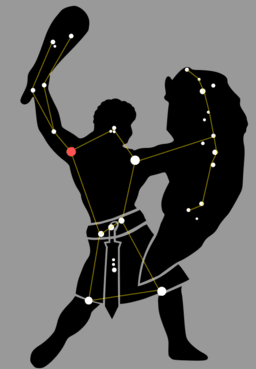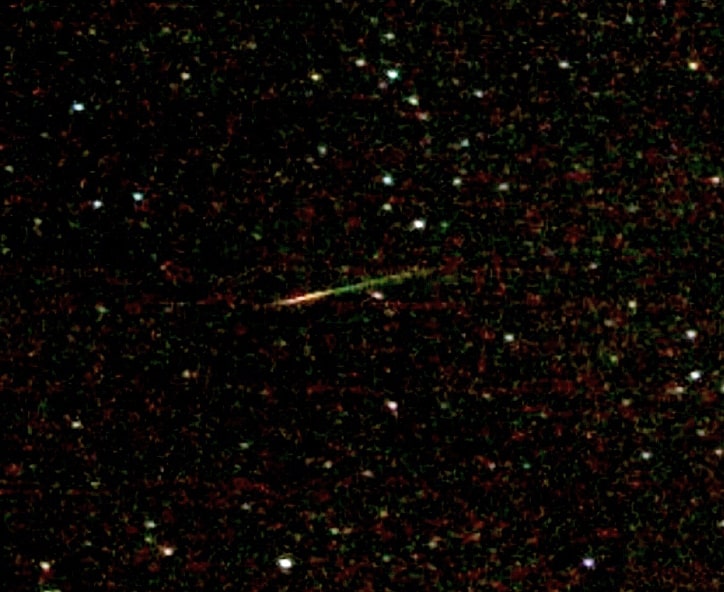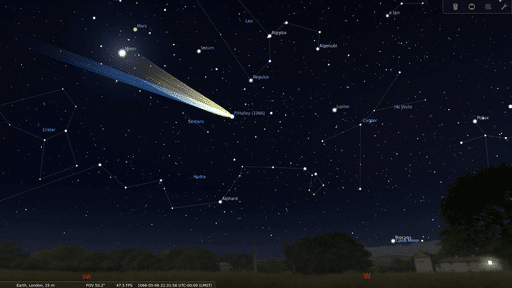Like Halley’s Comet, many different kinds of astronomical wonders pass over our night sky. One of these is the Orionids meteor shower. They’re also a relatively common thing as far as astronomical wonders go. The Orionids appear every year in October when the Earth passes through Comet Halley’s debris.
Just like every other year before, the Orionids meteor shower 2021 will occur this October. Orionids appear in their greatest numbers just before dawn, painting the sky in streaks of light. They’re extremely fast meteors, so they hit the Earth’s atmosphere at 41 miles per second.
For those using the metric system, that’s 66 kilometers per second. Despite their numbers, they’re relatively faint by themselves. However, you can definitely see them clearly because of their trains. The ionized gas trails they’re leaving behind help you see them much easier, even in the breaking dawn.
There will be ones that you see shining particularly bright, like their parent comet, Halley. However, they usually shatter into several brilliant fragments as they fly through the sky. If you’re hunting them by their trains, about half of them give off such trains. You shouldn’t have much issue spotting them even with your naked eye, especially at the peak hours.
Still, you will need to seek an ideal spot to go comet-watching for this. Ideally, you’ll want to find a spot that’s dark and look for a sky free of moonlight. That way, you’re more likely to see it any time during October, rather than waiting for peak hours.
Watch out this year though. News has it that the full Hunter’s Moon will flood the night sky during the shower’s peak hours. This means that you should probably watch the meteor shower earlier rather than later at night.
Orionids Meteor Shower
So what is the Orionids meteor shower? You could say that these meteors are like the children of Halley’s Comet. They’re made from the debris of that much bigger comet. Originating from the direction of the famous constellation, Orion, they derive their name from it.
The name “meteor shower” is technically a misnomer. It might look in your mind’s eye something like a rain shower: countless meteors visibly falling from the sky. But few, if any meteor showers actually look like that. And the Orionids aren’t particularly flashy. They’re not the year’s strongest display of meteors, nor are they known for storming.
Storming is a term meteor watchers use to mean a shower that produces a rich and unexpected display. You could get to a dark location at the peak hours of the shower. Even then, you’ll still only really see 10-20 of them.
So when is the Orionids meteor shower? It happens any time during October, and starts from October 5. However, it will most likely peak during October 20 and 21. The Orionid meteor shower peak time is around the early morning of those days.
That’s supposed to be around the best time to see Orionids meteor shower. However, meteor experts are sounding rather pessimistic about the show this year. “The Orionids will probably suck this year because the moon will be up all night.” Those are the words of NASA meteor expert, Bill Cooke.
Still, if you’re determined to see the show anyway, here’s how to watch the Orionids meteor shower. First, you need to be up early on October 20 and 21. From there, find a dark location, one where you can’t see the moon in the sky. Pray for the moon not to be bright, or, it’ll wash out the light from the meteor shower.
Comet Halley
Halley’s Comet is one of the more famous comets of the astronomical community. Officially, the comet’s name is 1P/Halley, but more know it as Halley’s Comet. It’s a short-period comet, so it comes back more often than most comets.
Granted though, it’s still a long time for us: a short-period is still less than 200 years. And Halley’s Comet only comes back every 75 years. Despite this, it’s famous for its uniqueness and frequency as a comet.
As far as seeing it goes, it’s not hard. It’s the only short-period comet visible to our naked eyes. Its frequency of 75 years means that most of us have a chance to see Halley’s Comet twice in our lifetimes. Comet Halley orbits the sun, so we’ll see it again some time in 2061, 40 years from now.
The meteors around the Orion constellation are debris from the trail of Comet Halley. They strike Earth most often around October 20-22 and originate in the direction of the Orion constellation. During this time, Earth will most likely intersect with Comet Halley’s orbit. Though it’s unlikely the comet itself will hit Earth, we do constantly intersect with its orbit.
Orion
The story of the hunter after whom the meteors take their name is a bit of a wild one. Orion was a hunter in Greek mythology, and an extremely talented one at that. In fact, he was so talented that the goddess of hunting herself, Artemis, took an interest in him.
Such an interest was rare, if not unheard of, because Artemis was a maiden goddess. She favored women to join her band of Hunters specifically over men. In fact, she not only let him join her on her sacred Hunts; she became fast friends with Orion. They’d sit together constantly at the campfires and bare their very souls to each other.
Despite this, he knew he could never win her heart; she was a sworn maiden goddess. No amount of friendship between them could change that, even if Orion wanted it so badly. Regardless, his story ended in tragedy, as so many Greek hero myths do. It’s just the variations of the ending that differ.
The sun god Apollo feared that Orion wouldn’t respect his sister and that he’d force himself on her too. So he challenged Artemis to a hunting contest to hit a speck, miles out in the sea. Naturally, she rose to her brother’s barbs and took the shot. As a hunting goddess, she couldn’t miss; she hit it dead on. Except that speck was Orion swimming. He died instantly.
The other version is that Orion boasted he could hunt any beast. The gods rightfully feared for the world’s ecology if Orion tried to prove it; he was just that good. So they made a scorpion whose armor he couldn’t pierce. He died trying to kill it. And in both endings, Artemis sorrowfully immortalized her friend in the stars. Hence, the constellation of Orion.
Radiating from Orion’s Constellation

There are specific points in the sky where you can see constellations. Meteor showers take their names from the constellation directions they come from. So obviously, the Orionids’ radiant point is the constellation Orion. You’ll find it ascending east in the hours after midnight, in October.
It’s okay if you don’t have a perfect astronomical eye. You don’t need to know where Orion is to see the shower. Staring towards the constellation specifically isn’t necessary either. That’s because the meteors themselves won’t be visible until they’re 30 degrees away from their radiant point.
They’ll also be streaking away from the radiant point in all directions. That’s partly why a meteor shower isn’t technically a “shower” of them all falling down. So you can spot the Orion meteors flying away from the constellation in all parts of the sky.
Try some meteor tracing; trace one of the meteors’ paths and see if you can get to Orion’s Club. If you do know your stars, you’ll probably know that the bright star Betelgeuse is in Orion. So if you can find that star, you’ll probably find the necessary radiant point.
You don’t even have to look in any particular direction! That’s the best part. As long as you found a dark location without moonlight, you can watch the whole show. Just with your naked eye too. In a wide-open viewing area with friends or your lover, there are few experiences like a meteor shower.


